Many hummingbirds have dazzling colors and glittering plumage. The shiny feathers of some hummingbirds even are iridescent: they change of color when looked upon from a different angle. For example the pink head feathers of a male Anna’s hummingbird. The Anna's hummingbrid can 'switch' the bright pink colors on and off by moving it's head into a different position. This way he can choose to stand out and attract a female or impress a rival, or he can choose to be less noticable and blend in with the environment.
Iridescent colors are not made by pigment, but by the microscopic strucure of the feathers. Some wavelenghts (colors) of sunlight are absorbed by the feather structure, so we don't see them. Other waves of light are reflected and refracted by the microscopic layers in the strucure of the feather. They add up, and together they produce the iridescent colors we see. Let’s take a closer look...
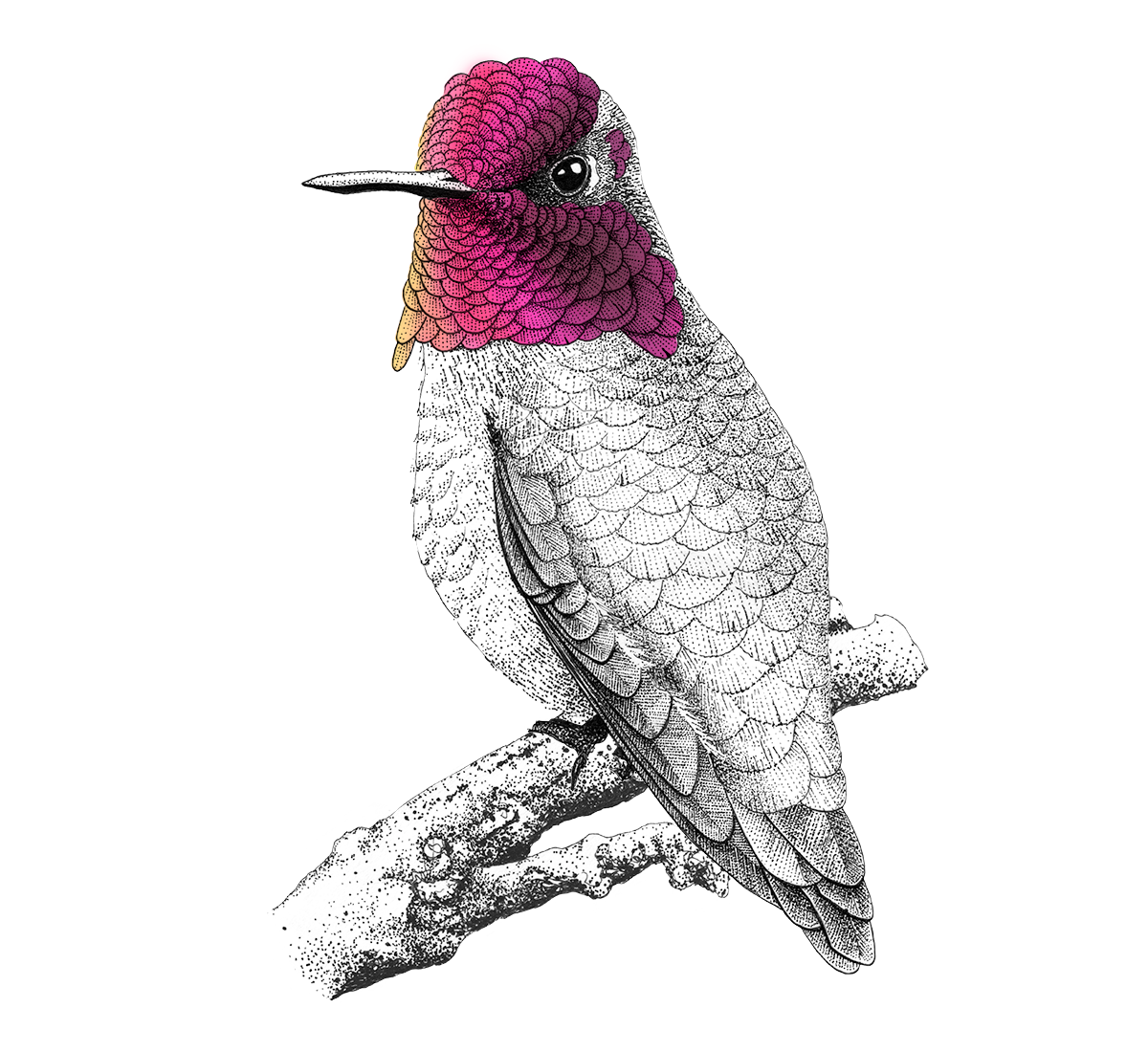
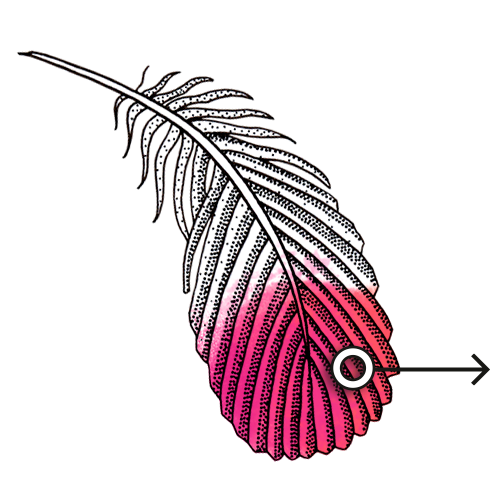
Feathers are made of keratin and consist of a central shaft with sidebranches: the barbs. This hummingbird feather has a pink iridescent part.
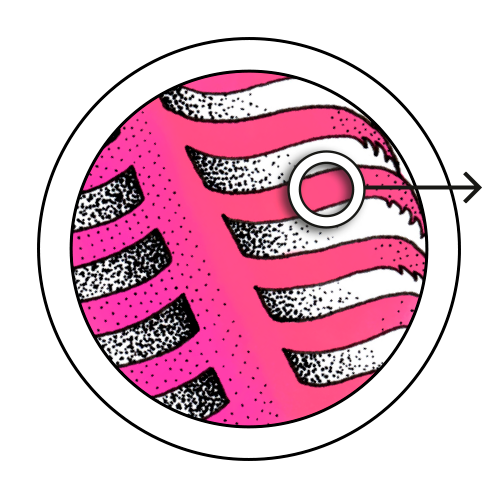
The barbs (sidebranches) of the feather have twigs attached to them: barbules.
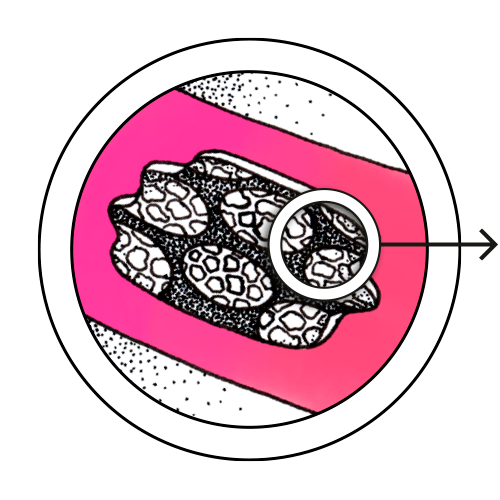
Beneath a translucent layer of keratin the barbules of an iridescent feather have layers of melanosomes.
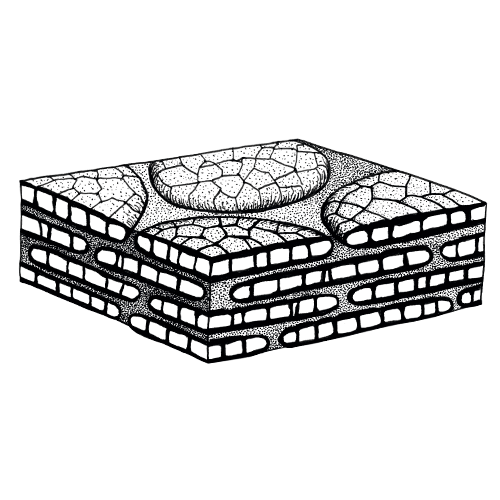
Melanosomes are pancake shaped melanin platelets filled with pockets of air that reflect and refract sunlight.
A single melanosome reflects and refracts sunlight more or less like an bubble of soap does. When light waves meet the thin film of a soap bubble, light is reflected from both the outer and the inner surfaces. However, this means that the light reflecting off the inner surface has slightly farther to travel than that reflecting from the outer surface.
The extra distance to travel depends on the angle at which the lightwaves hit the bubble and the thickness of the film. If the distance traveled through the film is equal to a whole number of a particular wavelength of light, then that light will reflect from both surfaces in such a way that the waves' peaks align perfectly. The waves are in phase and the result is an intense and bright color.
When the light waves are out of phase they cancel each other out completely, and there is an absence of color which we see as black. This is the case when the distance traveled is exactly half the width (or one and a half, two and a half, etc.) of the particular wavelength. When the waves are neither exactly in nor out phase, a dull color will be produced.
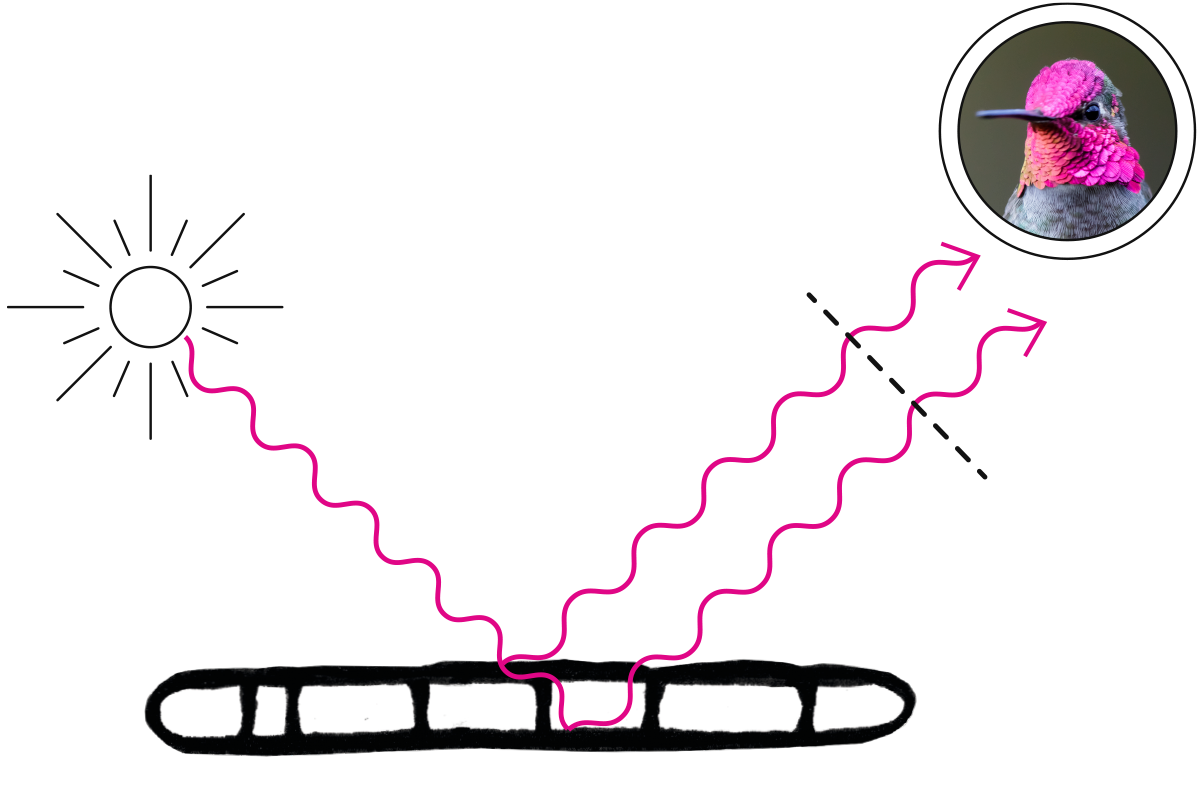
The reflected light waves are in phase and produce a strong bright and shiny pink color in the head of this Anna's hummingbird.
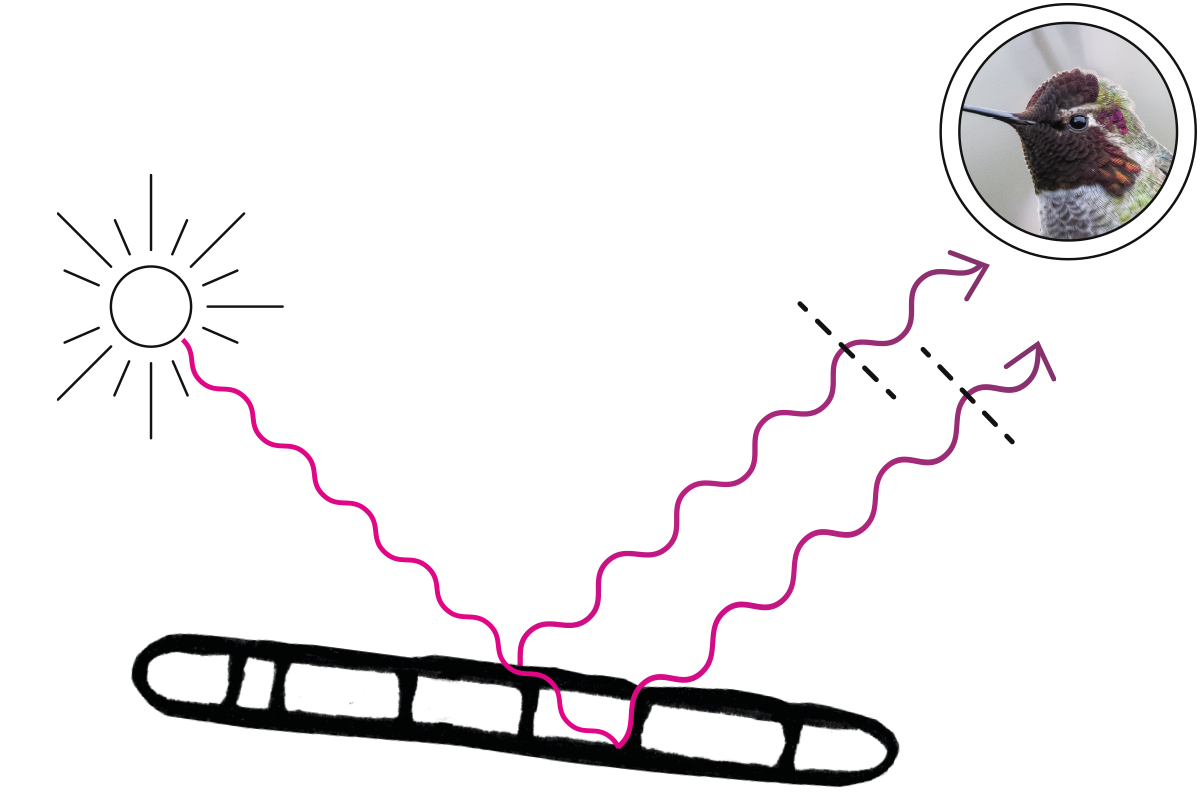
The reflected light waves are out of phase and are seen by us as black: absence of color.
These are a highly simplified visuals. In reality the reflections and refractions that produce iridescent colors in hummingbirds are much more complex. The light waves reflect and refract on each inner and outer surface of the air bubbles in the melanosomes. Some light waves even 'bounce around' a couple of times before they find their way out again. The number of stacked melanosome layers can vary from seven to fiteen deep. On top of that, the hue and saturation of the produced color is also influenced by the size of the airbubbles in the melanosomes, the platelet thickness ánd the shape of the barbules. This range of factors result in an incredible variety of iridescent hummingbird colors.
To make things extra complicated: the bright magenta pink color of the Anna's hummingbird's head isn't simply caused by the reflection and refraction of a magenta pink wavelength as shown in these simplified illustrations... magenta actualy is a mixture of mostly red light with a little bit of blue light.

Must have:
A stunningly illustrated guide to the wonderful world of hummingbirds. It features hundreds of the most spectacular photographs of hummingbirds ever taken and a lively, readable text that presents the latest scientific information and includes up-to-date details about every species.
This 288 pages hardcover is written by world-renowned wildlife photographer Glenn Bartley and managing director of WILDGuides Andy Swash. Published by Princeton University Press.
And... my illustrations are also in it! I feel truly honoured to have been able to contribute to this magnificent book.
Hummingbirds have amazingly aerobatic flight abilities. Their unique flight mechanisms result in a completely different style of flight than we know of other birds. Hummingbirds have perfected the art of hovering: they can maintain steady while hovering, and hover for prolonged periods. This ables them to feed on flowers while staying airborne. How do they get this done?
Hummingbirds do not flap their wings up and down to fly like most birds do. Instead they rotate their wings from the shoulder, creating an upwards lift on both forward and backward stroke, while their wingtips trace a figure eight. This way they can hover like a helicopter and fly backwards to retreat from a flower they’ve been feeding on. Small hummingbirds beat their wings 50 to 80 times per second.
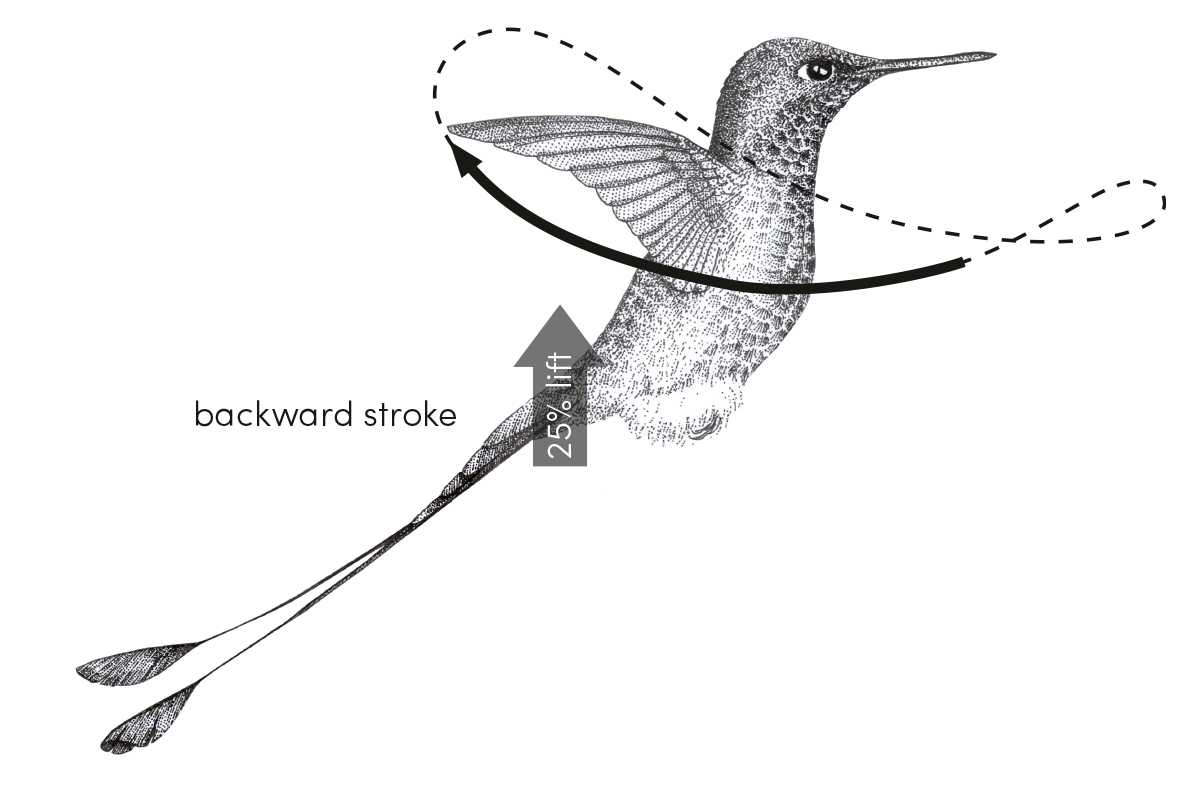
Backward stroke: 25% of the upwards lift
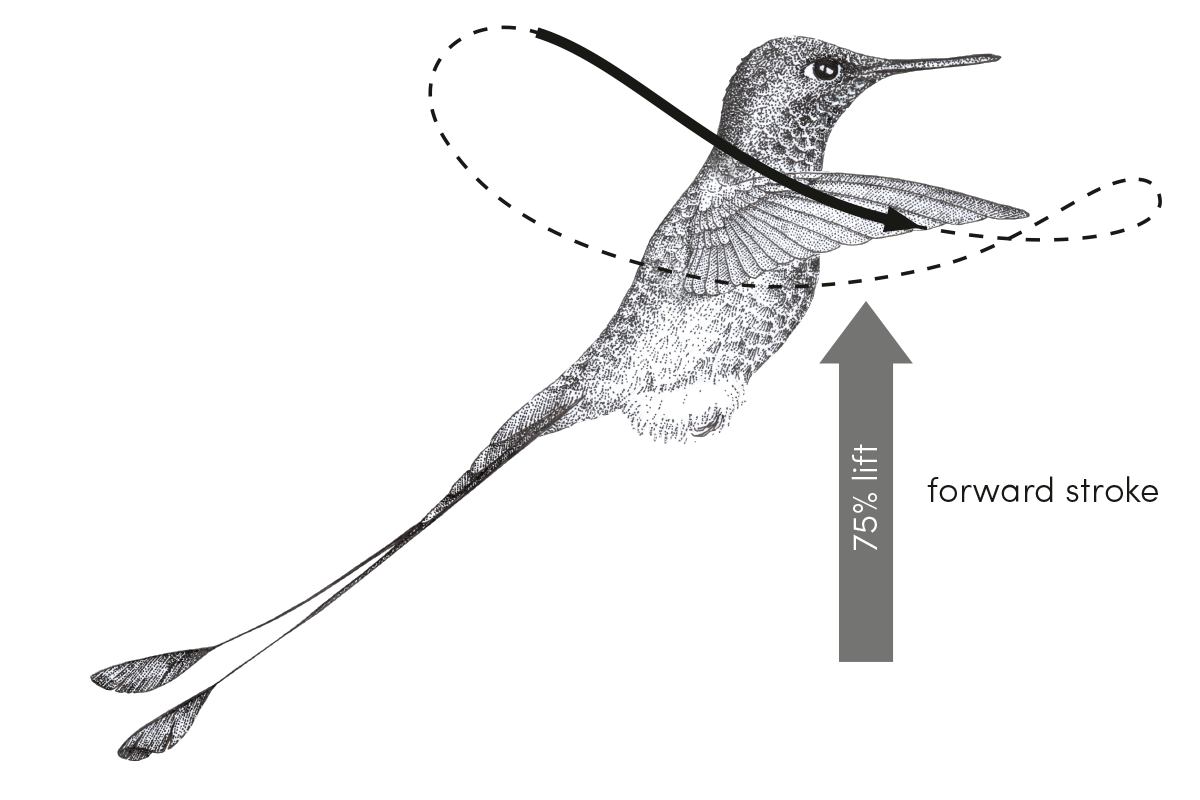
Forward stroke: 75% of the upwards lift
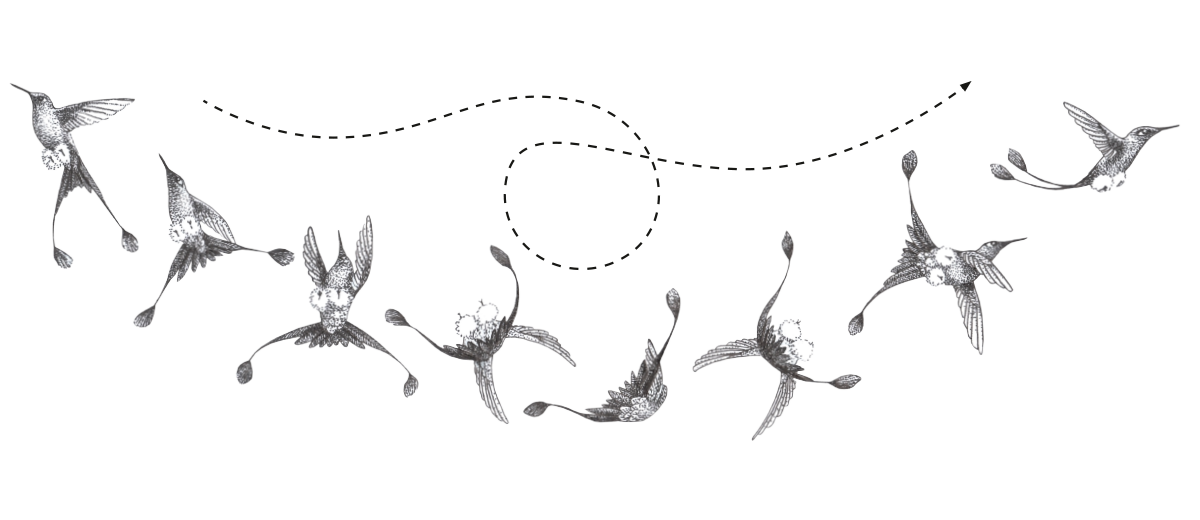
Hummingbirds are extremely agile: they can hover, rotate on the spot, fly backwards and can even fly upside down or make a somersault to get away from a rival or predator. Hummingbirds also use their agility for mating displays, competition and catching prey.
The findings of scientific research on hummingbirds acrobatic flight abilities could lead to improvements in the design of manmade flying machines, from airplanes to drones. They could also help to inspire the development of automated ground vehicles, such as self-driving cars. Like hummingbirds, these vehicles would have to navigate trough complex environments with ease. Inspiring creatures... these tiny birds!
Hummingbirds are built to fly. The combination of a very flexible shoulder, extremely short upperarms and very long hands with primary feathers, makes the hummingbirdwing particularly stiff and able to function more like insect wings than average bird wings. Hummingbirds have exceedingly well developed flying muscles, accounting for 25-30% of the hummingbird’s weight. Most hummingbirds rely completely on their wings for locomotion and are barely able to walk or hop. If they want to move a few inches on a branch or turn around on their nest, they simply fly up and land again.
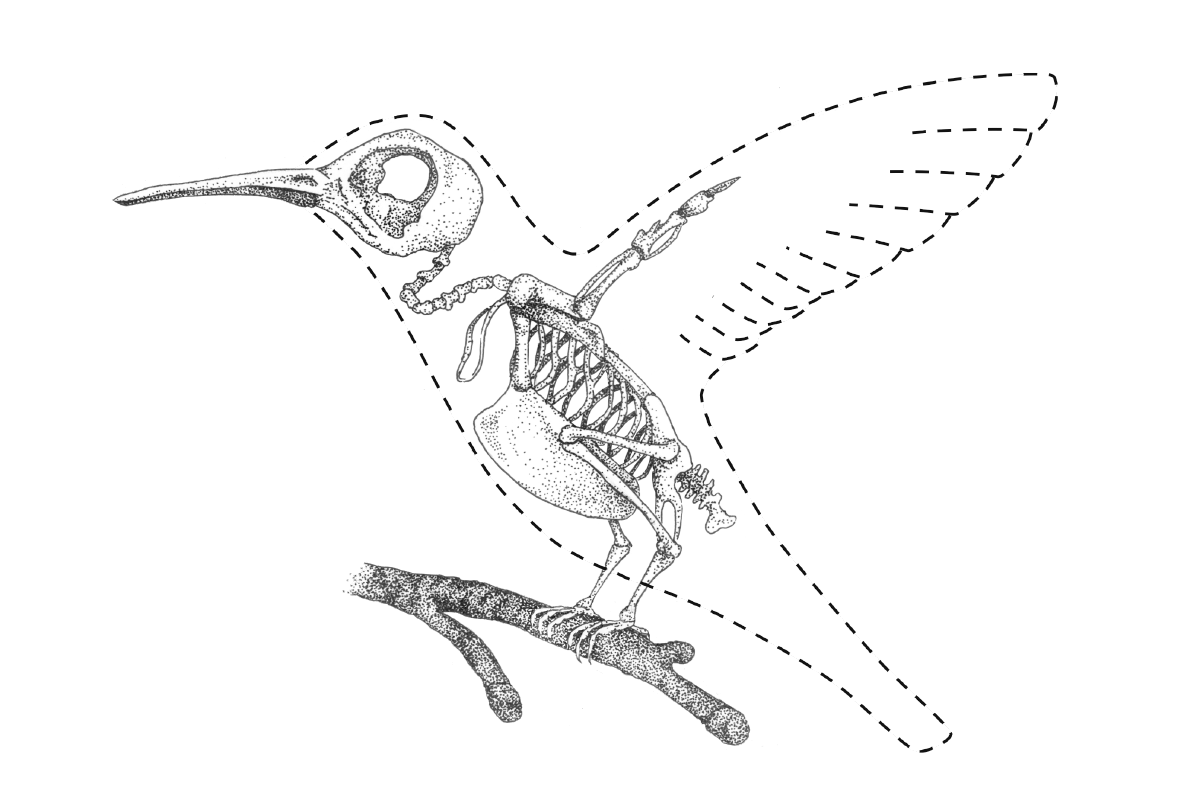
Hummingbird bone structure
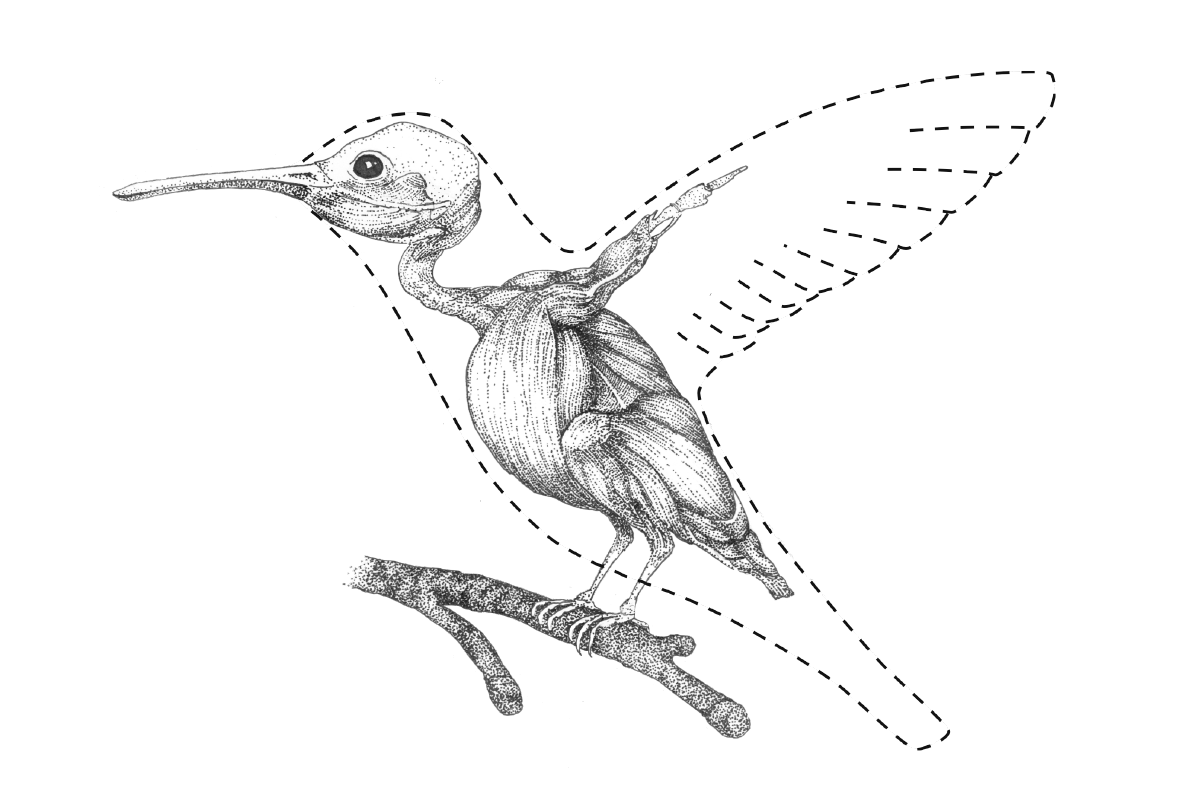
Hummingbird muscle structure